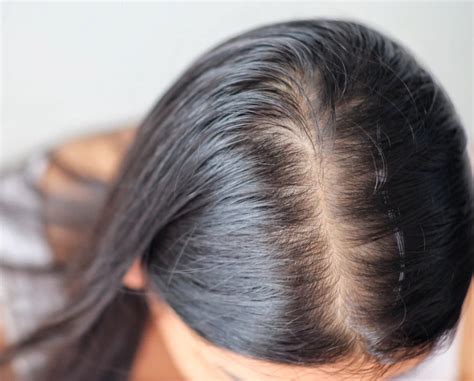Introduction

Hair loss is a common problem that affects millions of women worldwide. Whether it’s due to genetics, hormonal changes, or medical treatments, hair loss can have a profound impact on a woman’s self-esteem and quality of life. Fortunately, there are a wide range of hair replacement options available today that can help women regain their confidence and restore their youthful appearance.
Understanding the Types of Hair Replacement
There are two main types of hair replacement: surgical and non-surgical.
Surgical Hair Replacement
- Follicular unit transplantation (FUT): Involves removing strips of scalp from the donor area and transplanting them to the thinning or balding area.
- Follicular unit extraction (FUE): Involves extracting individual hair follicles from the donor area and implanting them in the thinning or balding area.
Non-Surgical Hair Replacement
- Wigs: Full or partial synthetic or human hair coverings that are worn over the head.
- Hairpieces: Smaller, non-permanent hair additions that can be attached to the scalp.
- Hair extensions: Synthetic or human hair strands that are bonded or clipped to the natural hair to add length or volume.
Choosing the Right Hair Replacement Option
The best hair replacement option for you depends on your individual needs, lifestyle, and budget.
- Consider your hair loss pattern: Some hair replacement options are better suited for certain types of hair loss.
- Assess your budget: Hair replacement can range in cost from a few hundred dollars to several thousand dollars.
- Research different methods: Read reviews, consult with hair replacement specialists, and explore the pros and cons of each option.
Benefits of Hair Replacement for Women
Hair replacement can provide numerous benefits for women:
- Enhanced confidence: Regaining a full head of hair can boost self-esteem and improve overall well-being.
- Improved appearance: Hair replacement can help you look younger, healthier, and more attractive.
- Reduced stress: Hair loss can be a source of anxiety and stress. Hair replacement can alleviate these concerns.
- Increased social interaction: Feeling confident in your appearance can lead to more social interactions and improved relationships.
Step-by-Step Guide to Hair Replacement
Consultation:
- Schedule a consultation with a hair replacement specialist to discuss your hair loss concerns and explore the available options.
- Bring photos of your hair loss and any medical records that may be relevant.
Examination:
- The specialist will examine your scalp and hair to determine the extent of hair loss and recommend suitable treatments.
Treatment:
- Surgical or non-surgical hair replacement will be performed according to the chosen treatment plan.
- Follow-up appointments may be necessary to maintain the results.
Why Hair Replacement Matters
Hair replacement is not just about vanity. It’s about empowering women to live full and vibrant lives without the stigma and limitations associated with hair loss.
Applications of Hair Replacement Beyond Traditional Uses
- Medical applications: Hair replacement can help restore hair loss caused by medical treatments, such as chemotherapy.
- Burn victims: Hair replacement can cover scalp scars and restore hair growth after burn injuries.
- Alopecia: Hair replacement can provide a solution for women with alopecia areata, an autoimmune condition that causes hair loss.
Tables
Table 1: Hair Replacement Treatment Options
| Treatment Type | Description |
|---|---|
| Follicular Unit Transplantation (FUT) | Surgical removal and transplantation of hair follicles |
| Follicular Unit Extraction (FUE) | Surgical extraction and implantation of individual hair follicles |
| Wigs | Full or partial hair coverings made of synthetic or human hair |
| Hairpieces | Non-permanent hair additions that can be attached to the scalp |
| Hair Extensions | Synthetic or human hair strands added to natural hair for length or volume |
Table 2: Benefits of Hair Replacement for Women
| Benefit | Description |
|---|---|
| Enhanced Confidence | Boost in self-esteem and improved well-being |
| Improved Appearance | Looks younger, healthier, and more attractive |
| Reduced Stress | Alleviation of anxiety and stress związanych with hair loss |
| Increased Social Interaction | Confidence leads to more social interactions and improved relationships |
Table 3: Surgical Hair Replacement Options
| Option | Description |
|---|---|
| Follicular Unit Transplantation (FUT) | Removes strips of scalp and transplants to thinning or balding areas |
| Follicular Unit Extraction (FUE) | Extracts individual hair follicles and implants in thinning or balding areas |
Table 4: Non-Surgical Hair Replacement Options
| Option | Description |
|---|---|
| Wigs | Full or partial hair coverings made of synthetic or human hair |
| Hairpieces | Non-permanent hair additions that can be attached to the scalp |
| Hair Extensions | Synthetic or human hair strands added to natural hair for length or volume |
FAQs
1. Is hair replacement permanent?
Surgical hair replacement options can be permanent or semi-permanent, while non-surgical options are temporary.
2. How long does hair replacement last?
FUT and FUE can last up to 10-12 years, while non-surgical options typically last 3-6 months.
3. Is hair replacement painful?
Most hair replacement procedures are performed under local anesthesia, making them relatively painless.
4. How much does hair replacement cost?
The cost of hair replacement varies depending on the type of treatment and the size of the area being treated.
5. Is hair replacement covered by insurance?
Some medical hair replacement treatments may be covered by insurance in certain circumstances.
6. What are the risks associated with hair replacement?
Risks include infection, scarring, and bleeding.
7. How do I choose the right hair replacement specialist?
Look for a certified specialist with experience in treating hair loss.
8. What are the latest advancements in hair replacement technology?
Continued research is leading to new and innovative hair replacement techniques, such as 3D printing of hair follicles.
